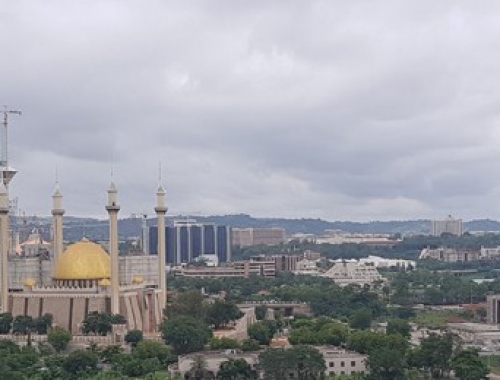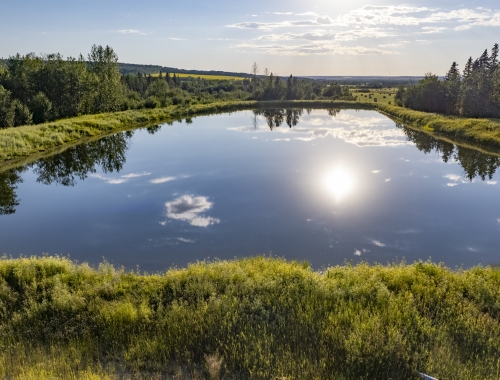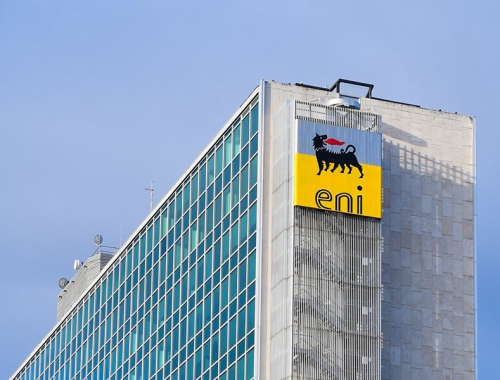To implement its Decade of Gas programme, Nigeria must adjust business as usual
Nigeria is the largest oil and gas producer in Africa and the world’s sixth largest supplier of LNG. But it is difficult to look at Nigeria’s potential and not conclude that much has been squandered. The country is now looking to concentrate on its gas resources during a ‘Decade of Gas’ and transition to a gas-powered economy by 2030. Previous efforts have been made to capitalise on Nigeria’s gas resources, particularly a master plan that was drawn up in 2008, yet the country still suffers from ‘energy poverty’. Much will need to happen in the coming years to meet domestic needs, cut carbon emissions and hit the export goals that the country has in mind.
It is probably impossible to say how much money Nigeria has lost to corruption and mismanagement over the decades. Between military dictators, corrupt officials, shady deals, fuel subsidies, outright theft, inefficiency and maladministration, the West African state and OPEC member does not have all that much to show for the billions of dollars in hydrocarbon revenues it has earned over the years as a major oil and gas producer and exporter.
Oil and gas sales comprise nearly all of its foreign income. International oil companies operating in Nigeria have gained notoriety for their callous disregard for the environment while rebellious militias and villagers have tapped into oil pipelines resulting in massive leaks and sometimes fiery catastrophes.
Nigeria has four refineries but their state of disrepair has the country importing most of its petroleum products. It has yet to be seen if a new 650,000 b/d refinery built by Dangote will make a difference. The practice of oil swaps used to import products for crude has not always worked to Nigeria’s benefit, but the $19bn refinery, with a capacity to produce 50mn litres of gasoline and 15mn litres of diesel every day might make a difference.
In early April, the Nigerian Extractives Industry Transparency Initiative (NEITI) reported that during a 12-year period between 2009 and 2020, Nigeria lost 619.7mn barrels of crude oil as a result of theft. The agency estimates the value of that oil at $46.16bn, the equivalent of N16.25 trillion. It equated the loss at an average of 140,000 b/d.
NEITI said that between 2009 and 2018, Nigeria lost 4.2bn litres of petroleum products from refineries which is values at $1.84bn. The agency has submitted its findings to the office of the president and urged civil society to target issues in the oil and gas industries so they might be addressed. The group is a strong advocate of transparency in the sector, which it said has been known for its opacity.
The agency has also reported that fuel subsidies have cost the country $74bn (13 trillion naira) between 2005 and 2021. It said that this figure in relative terms is equivalent to Nigeria’s entire budget for health, education, agriculture and defence over the last five years.
In March 2021, President Muhammadu Buhari (who will leave office in late May 2023) launched the Nigeria Decade of Gas Initiative which aims to transform Nigeria into a gas-powered economy by 2030. At the time, Buhari said the initiative would generate significant revenues and create thousands of jobs for Nigerians. That’s a possibility, but reforms and investment will be needed.
The country’s gas industry has been growing in recent years with gas production rising from 8.41bn ft3/d in 2015 to 10.24bn ft3/d in 2020. Gas reserves have also increased to 206.53 trillion ft3, according to the Nigerian National Petroleum Corporation (NNPC), and some geologists cited by the Nigerian government claim the country’s gas reserves could be as much as 600 trillion ft3 if companies specifically set out to explore for gas rather than finding it in the course of drilling for oil.
In a statement released by the Gas Exporting Countries’ Forum in March 2021, President Buhari said: “To actualize the dream of transforming Nigeria with its massive natural gas resources requires collaboration of government with the necessary stakeholders; the international oil companies, the indigenous oil companies and financial companies … to fully utilise our gas resources to uplift our economy.”
Efforts have been made to reduce gas flaring, which is reported to be around 6.5bn m3/yr. The gas initiative also calls for an increase in the utilisation of LPG and developing a market for gas among Nigerian industries. It will be the responsibility of President-Elect Bola Tinubu, who takes office in late May, to see planned projects get under way.
Discovering new gas reserves will be essential for Nigeria’s plans, but expanding distribution, greater supervision of infrastructure, maintenance and repair, reduced flaring, proper regulation and better bookkeeping will be crucial in the transition that Nigeria hopes to make.
Nigeria’s domestic gas infrastructure network has the capacity to transport about 6.9bn ft3/d of gas to support power generation and gas-based industries. However, there is insufficient gas capturing and transportation infrastructure. This will be a primary step for Nigeria if it is to transition to gas power. The key infrastructure deficit is primarily on the nation’s gas transmission backbone. To bolster this, the Nigerian Independent Petroleum Company (NIPCO) is raising its investment in gas infrastructure.
Nigeria LNG Limited operates six liquefaction units producing 22mn mt/yr of LNG. The facility also has the capacity to produce 5mn mt/yr of LPG and condensate. Trains one, two and three have the capacity to produce 3.33mn mt/yr of LNG each, while trains four, five and six can produce 4mn mt/yr. A seventh train was launched in June 2021. It will increase NLNG’s current six-train plant capacity by about 35% to 30mn mt/yr.
Among the current plans to expand the national gas transmission network is the $2.8bn Ajaokuta-Kaduna-Kano (AKK) pipeline. Currently under construction, the 614 km-long pipeline will transport natural gas from Ajaokuta to Kano via Kaduna. The project is expected to boost domestic gas consumption and power generation.
In the GECF statement released in March 2021 relating to Nigeria’s Decade of Gas, Nigeria’s State Minister for Petroleum Resources, Timpire Sylva said: “It is no longer acceptable that despite the country’s vast natural gas resources the gap between electricity supply and demand is huge. We must deal with the energy poverty in this country, we must find a way to unlock the natural gas potential of this great nation and drag over 120 million people out of energy poverty.”
Nigeria is also wanting to export gas through two very long pipelines that will see some of the gas making its way to Europe.
The Trans-Saharan gas pipeline is a proposed natural gas pipeline running across the Sahara Desert from Nigeria to Algeria. The idea for a Trans-Sahara pipeline has been around for a long time. The pipeline is expected to be 4,400 km long and will transport natural gas from Nigeria’s Niger Delta region to Algeria’s Hassi R’Mel gas hub. From there, the gas can be shipped to Algeria’s LNG plants or to Europe through subsea pipelines to Spain or Italy.
The Nigeria-Morocco gas pipeline is a proposed natural gas pipeline that will run through West African countries, providing them with natural gas. The pipeline is expected to be 5,660 km long and will transport natural gas from Nigeria’s Niger Delta region to Morocco’s Casablanca hub. From there it can be linked to the Maghreb-Europe Pipeline (MEP) to Spain.
The Nigeria-Morocco gas pipeline will cross 13 African countries along the Atlantic coast and supply the landlocked states of Niger, Burkina Faso and Mali. The pipeline will connect Nigerian gas to every coastal country in West Africa (Benin, Togo, Ghana, Cote d'Ivoire, Liberia, Sierra Leone, Guinea, Guinea-Bissau, Gambia, Senegal, and Mauritania). The pipeline is expected to be around 1,672 km long inside Morocco. The project is estimated to cost $25bn and would be completed in stages over 25 years. By that time, Europe could be in a situation where it is operating almost gas free.






